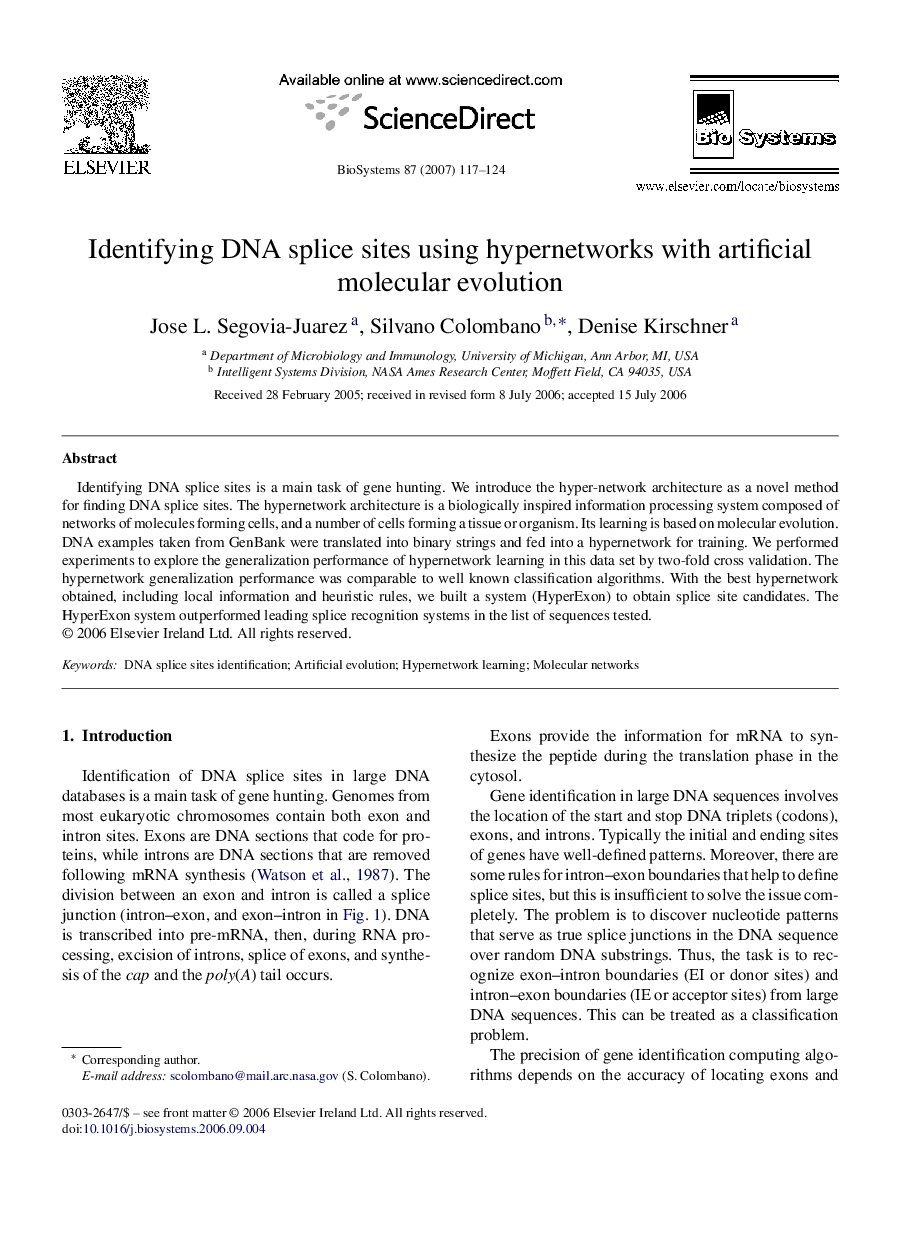| Article ID | Journal | Published Year | Pages | File Type |
|---|---|---|---|---|
| 2076966 | Biosystems | 2007 | 8 Pages |
Identifying DNA splice sites is a main task of gene hunting. We introduce the hyper-network architecture as a novel method for finding DNA splice sites. The hypernetwork architecture is a biologically inspired information processing system composed of networks of molecules forming cells, and a number of cells forming a tissue or organism. Its learning is based on molecular evolution. DNA examples taken from GenBank were translated into binary strings and fed into a hypernetwork for training. We performed experiments to explore the generalization performance of hypernetwork learning in this data set by two-fold cross validation. The hypernetwork generalization performance was comparable to well known classification algorithms. With the best hypernetwork obtained, including local information and heuristic rules, we built a system (HyperExon) to obtain splice site candidates. The HyperExon system outperformed leading splice recognition systems in the list of sequences tested.
